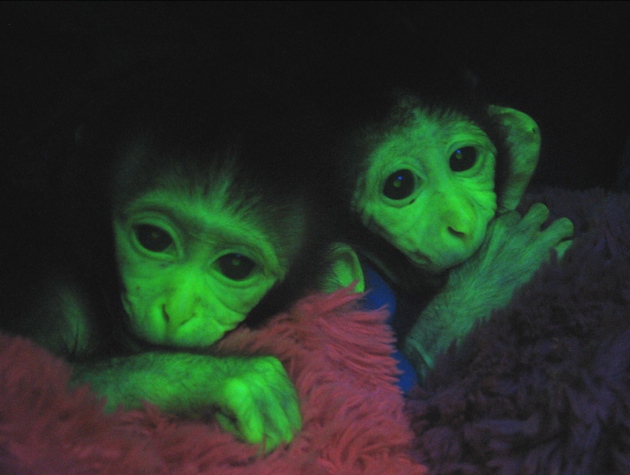He helped scientists to see things they could never have imagined. Roger Tsien, who died last week aged 64, shared the 2008 Nobel Prize for Chemistry for his work with the green fluorescent protein (GFP), which has become an indispensable tool in life sciences research.
Tsien, a chemist who worked mainly at the University of California, San Diego, probed the protein’s structure and used the insights to boost GFP’s glow and build a whole palette of fluorescent proteins, which researchers have used to trace individual proteins and cells.
Here Nature celebrates Tsien’s work — and some of the objects that might never have been seen without his insights.
Roger Tsien

Joe Toreno for HHMI/REUTERS
Tsien, shown here holding vials of GFP and related fluorescent proteins, died on 24 August in Eugene, Oregon.
The source

Gregory Ochoki/Science Photo Library
The jellyfish Aequorea victoria can emit a gentle green light from organs around the edge of its body. Osamu Shimomura, an emeritus professor at the Marine Biological Laboratory in Woods Hole, Massachusetts, earned his share of the 2008 Nobel prize for isolating a ‘green protein’ from the jellyfish.
Peering inside

Yi Zuo/MCDB/University of California Santa Cruz (CC BY-NC-ND 2.0)
This image shows the hippocampus of a mouse brain that has been stained with GFP. Many structures now routinely examined by researchers would be practically invisible without this protein. Martin Chalfie, at Columbia University in New York, took a share of the 2008 Nobel prize for his work using GFP as a label for cells.
The Brainbow

Livet, Weissman, Sanes and Lichtman, Harvard University
In 2007, a team from Harvard University in Cambridge, Massachusetts, reported a method that can visualize hundreds of individual neurons in different colours in a slice of brain, a feat unimaginable without fluorescent proteins in many different hues.
Vital structure

Umberto Salvagnin (CC BY 2.0)
The barrel-shaped structure of GFP was revealed in 1996. The chromophore in the middle of the barrel is the key to its fluorescence.


